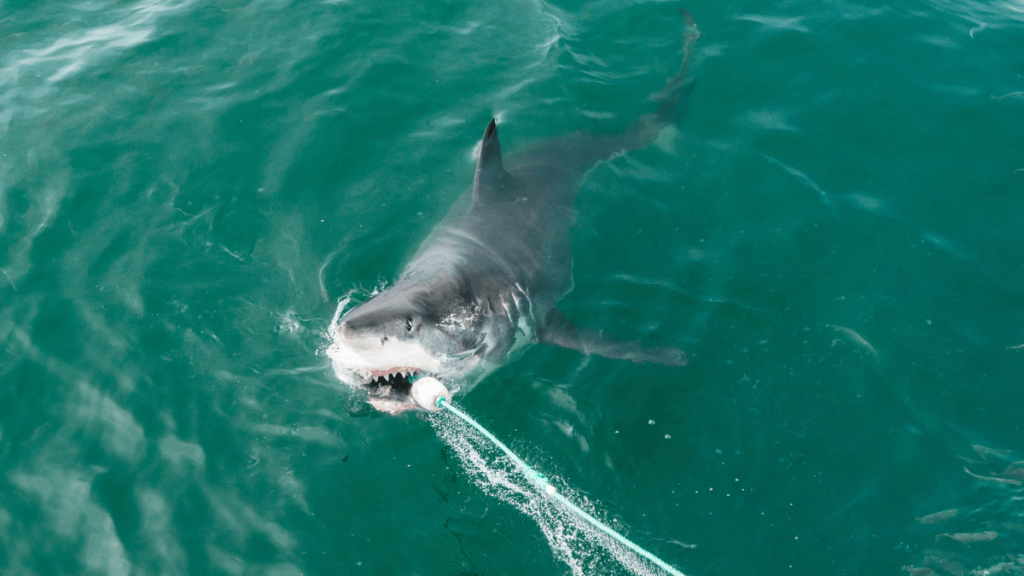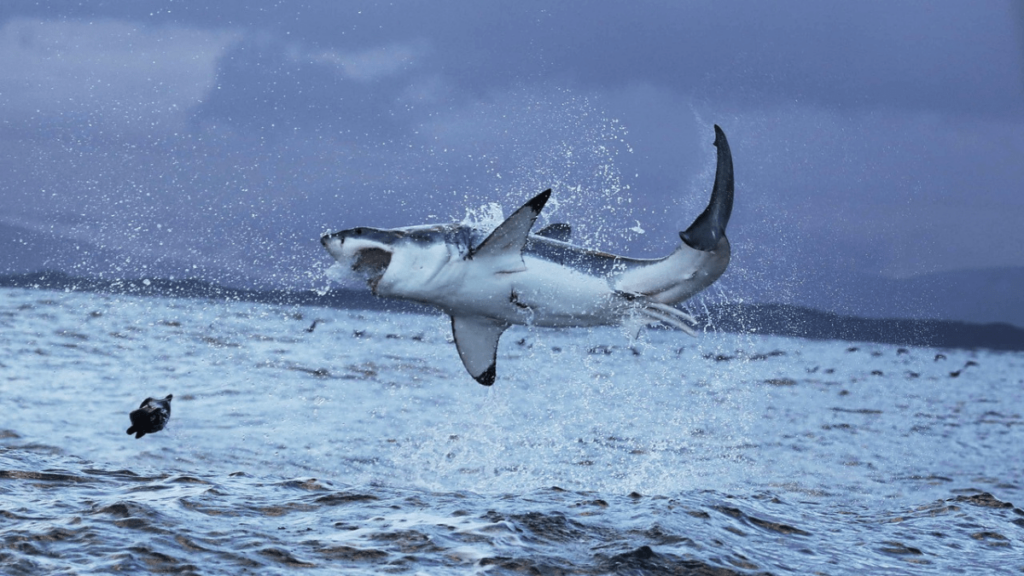Great white sharks are, as the name might suggest, pretty big sharks. Though they’re not the biggest sharks in the world (that honor goes to the whale shark), they are the world’s biggest predatory shark, beating out the other big competitor, the tiger shark, quite easily.
But the question many people commonly ask is, what is the biggest great white shark ever recorded? Today, you’re going to find out the answer!
Throughout history, there have been no small number of big great whites observed. While it was historically quite difficult to measure the size of a living great white, advancements in technology have made it increasingly possible to observe these magnificent animals in their natural habitats – and both record and estimate such things as their weight and size.
With that said, then, this list is obviously going to be skewed more toward the modern record than a historical one. There will be one or two honorable mentions from the dark oceans of yesteryear – if a little less corroborated than their modern counterparts.
Without further ado, then: let’s take a look at the largest great white sharks ever observed.
The Largest (Unverified) Great White Sharks Throughout History
As mentioned, one of the biggest problems with historical sightings is that they were next to impossible to verify.
Prior to the mid-20th century, there was almost no way to reliably observe sharks of any kind, and many encounters were inevitably tainted by exaggeration and rumor.
Taken with a huge grain of salt, then, here are the largest great white sharks observed throughout history:
- 1870s (exact year unknown), Port Fairy, Australia: 10.97m/36ft
- 1930s (exact year unknown), New Brunswick, Canada: 11.27m/37ft
- 1945, Cuba: 6.49m/21.3ft
- 1987, Malta: 7.13m/24ft
- 1997, Hualien County, Taiwan: 6.7-7m/22-23ft
- 2012, Mexico: 2000lbs (no length given)
These are all a little larger than the largest officially recorded great white shark, which came in at 5.83m/19.1ft and lends credence to the stereotype that fishermen are prone to exaggerating the size of their catches.
Furthermore, while some examples above cannot be directly refuted, those with photographic evidence can often be called into question based on visual evidence.

Many shark experts, for instance, doubt the claim that the 1945 Cuban great white was as big as was claimed; based on the photo, one expert put the shark’s length at roughly 4.88m/16ft – a substantial downgrade. Similar aspersions can probably be cast on the other examples cited above.
The Largest Verified Great White Sharks
With those possibly tall tales out of the way, it’s time to take a look at those great whites whose sizes have been scientifically verified rather than simply taking fishermen at their word.
The largest verified great white sharks are as follows:
- 1983, Prince Edward Island, Canada: 5.2m/17ft
- 1987, Ledge Point, Australia: 6.1m/20ft
- 1988, Alberton, Prince Edward Island, Canada: 6.1m/20ft
- 2009, Guadalupe Island, Mexico: 5.5m/17.9ft
- 2014, Guadalupe Island, Mexico: 6.1m/20ft
In some instances, verification was not taken from measuring the whole shark from nose to tail; in the 1987 Ledge Point instance, for example, the shark was decapitated, and its size extrapolated from teeth and head size.
Why Do Great Whites Get So Big?
One of the interesting things about great whites is that, unlike human beings, they keep growing throughout their entire lives.
That’s why the world-famous Deep Blue (the 2014 Guadalupe Island shark sighting mentioned above) is so huge; she’s estimated to be around 60 years old, and she has kept growing throughout her life. She will continue to grow for the remainder of her life, too, which may be another 10 years.
A great white’s size is also linked to how much it eats. Simply put: the better the eating, the bigger the shark. Bigger and older sharks become less nimble and are unable to hunt as successfully as smaller sharks, however; this is why so many huge great whites are seen feeding on whale carcasses, as they can no longer hunt seals.
Why Is It So Difficult To Record Great White Lengths?
It almost goes without saying that it’s impossible to measure a living great white shark in its natural habitat. They’re generally not inclined to sit still while marine biologists get their tape measures out, for one.

Facetiousness aside, historical measurements have relied, generally, on dead sharks that have washed up on the beach or been caught in nets.
Such carcasses do not produce accurate measurements; the bodies are often compromised in some way (parts missing or eaten by other sharks or fish, for instance), and being out of water for prolonged periods of time alters the length and weight of the shark as decomposition sets it. It’s, therefore, difficult to put much stock in historical measurements of dead sharks.
In addition, dead great whites that somehow end up in nets or on the beach represent a vanishingly small number of great whites that die; most are never seen by human eyes and are instead completely eaten by other denizens of the deep. This most likely includes the oldest and largest great whites.
”At present, then, the largest ever recorded specimen comes in at 6.1m/20ft. Anything else is speculation – until it’s actually verified by scientists.”
Furthermore, great whites are virtually impossible to keep in captivity. Though there are a few notable examples (all involving California’s Monterrey Bay Aquarium), great whites that are successfully captured typically die very quickly. And even those that don’t are not necessarily representative of the size of sharks in the wild; most of the Monterrey Bay sharks, for instance, were juveniles.
So, What Was The Biggest Great White Shark? The Largest Ever Recorded Was 6.1m/20ft

Though many historical accounts of great white shark sizes are vague, nebulous, or maddeningly prone to exaggeration, innovations in how we monitor and measure marine life in the 21st century have removed a lot of the vagueness, guesswork, and deliberate obfuscation from the process of figuring out just how big the biggest great white sharks are.
And while it still remains difficult to get exact measurements (even with sophisticated monitoring equipment, after all, you’re still trying to measure a large, fast-moving ocean predator with any degree of accuracy), the fact is that we have a much clearer picture of the size of these magnificent animals than ever before.
At present, then, the largest ever recorded specimen comes in at 6.1m/20ft. Anything else is speculation – until it’s actually verified by scientists.
